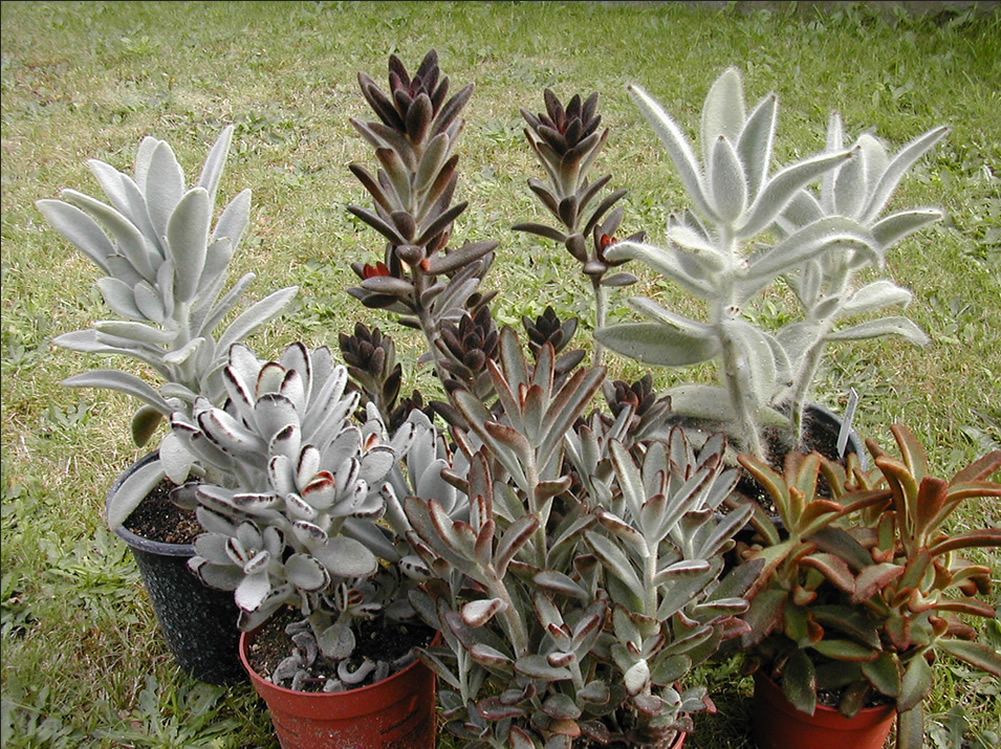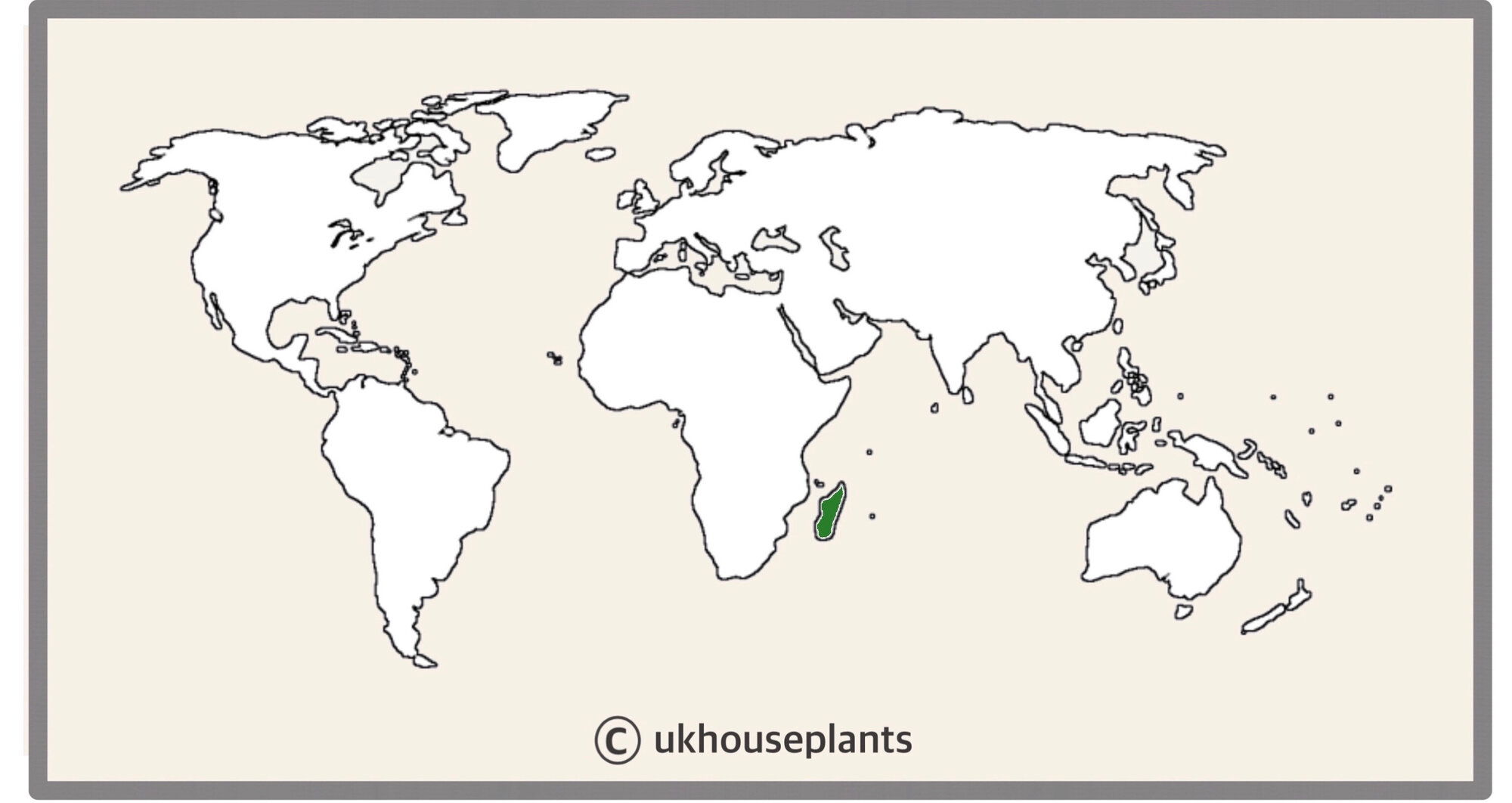
Kalanchoe tomentosa
Contents
- Top Tips
- Location, Water, Humidity & Fertilisation
- Common Issues
- Origins, Temperature, Propagation, Repotting & Toxicity
Need the answer to a specific plant query? Book a 1-to-1 video call with THE HOUSEPLANT DOCTOR™, the website's friendly author, to overcome and address your niggling problem! Available on iMessage, WhatsApp, Facebook Messenger & more.
Top Tips & Info
- Care Difficulty - Easy
- A few hours of morning or evening sun is mandatory, especially in the winter months.
- This species of Kalanchoe must endure periods of droughts in between waters - if you're stuck with when to water it, think of the ukhouseplants' phrase of 'drenches between droughts'.
- Supplement every few months using either a 'Cactus & Succulent' or 'Houseplant' labelled feed.
- Repot every two years in the spring, using a 'Cactus & Succulent' potting mix. This is the perfect time to propagate the small offshoots that'll form at the base of the crown. Carry on reading to learn more about the top tips mentioned above.
Location & Light - 🔸🔸🔸
This species of Kalanchoe will need a bright area with the possibility of morning or evening sunlight. Those kept in darker areas will develop slowed growth, leggy internodes and a tendency to develop root rot if over-watered. We'd recommend a windowsill, semi-shaded conservatory or within two metres of a south-facing window.
Water - 🔸
In its natural habitat of Madagascar, this Kalanchoe must endure torrential downpours between prolonged dry spells to survive. Keeping this in mind, rehydrate only once the soil's entirety has thoroughly dried out, reducing this further in the autumn and winter. If you have trouble knowing when to water appropriately, remember the ukhouseplants phrase, 'drenches between droughts'. Under-watering symptoms include shrivelling leaves and stems, little to no growth, gradual decline; these issues are usually caused by too much light or heat, a much needed repot or possible forgetfulness. Over-watering symptoms include yellowing leaves, a collapsed stem, wilting and plant death. Never situate yours in a dark location, as the combination of both too little light and too much soil moisture will slowly lead to root rot.
Humidity -
This is not a factor; however, a quick hose down from time to time will reduce the number of dust particles covering its leaves.
Fertilisation - 🔸
Feed every few months using either a 'Cactus & Succulent' or 'Houseplant' labelled fertiliser. Do not directly apply 'ready to pour' feeds into the soil without a pre-wash, as this will lead to burning roots and yellowed leaves
Common Issues with Kalanchoe Tomentosa
Over-watering is the most common issue, with typical signs including a softened centre and blackened foliage. There must be periods of droughts to replicate the habitats of the Madagascan deserts, as well as limiting the chance of diseases. Avoid waterlogging as there's no point fulfilling the phrase 'drenches between droughts' if the base of the pot is submerged. For more information about over-watering related issues, be sure to click on this link.
Scorched or crispy leaves are the result of too little water and over-exposure to the sun. Although Kalanchoe are a superb choice for plants in sunny locations, those that haven't acclimatised to the harsh rays will show signs of sun-scorch and environmental shock. Prolonged exposure will significantly speed the process of dehydration, so consider transplantation into a bigger pot (in the spring) to wrap the roots around moister soil.
Over-supplementing a Kalanchoe will bring nothing but grief in the likes of yellowing leaves and weak, dramatic growth. Although a six-weekly feed is an excellent way to promote good health, dry soil and fertiliser salts will quickly lead to the burning of roots. The advice for this issue is to pre-moisten the soil beforehand and reduce the frequency of fertilisations somewhat.
 A family of Kalanchoe tomentosa with different culitvars.
A family of Kalanchoe tomentosa with different culitvars.
Origins
This species was first described by John Gilbert Baker in 1882, during a voyage to Madagascar and surrounding areas. He placed it in the pre-existing genus of Kalanchoe, erected by Michel Adanson, along with the specific epithet of 'tomentosa' that translates to 'covered in hairs'.
 The Distribution of Kalanchoe tomentosa.
The Distribution of Kalanchoe tomentosa.
Temperature
12° - 25°C (54° - 78°F)
H1b (Hardiness Zone 12) - Can be grown outdoors during the summer in a sheltered location with temperatures above 13℃ (56℉), but is fine to remain indoors, too. If you decide to bring this plant outdoors, don't allow it to endure any direct sunlight as it may result in sun-scorch and dehydration. Regularly keep an eye out for pests, especially when re-introducing it back indoors.
Spread
Up to 0.7m in height and 1m in width. The ultimate height will take between 5 - 8 years to achieve.
Pruning & Maintenance
Remove yellow or dying leaves, and plant debris to encourage better-growing conditions. While pruning, always use clean utensils or shears to reduce the chance of bacterial and fungal diseases. Never cut through yellowed tissue as this may cause further damage in the likes of diseases or bacterial infections. Remember to make clean incisions as too-damaged wounds may shock the plant, causing weakened growth and a decline in health.
Propagation
Via Seed & Leaf/Stem Division.
Leaf Cuttings (Easy) - Leaves that are halfway along the stem have the most potential due to its size and maturity. Gently place your fingers between the mother's stem and the leaf's base, pulling it downwards until you hear a snap. Ensure the wound is wholly intact with no damage, as a bruise or tear will result in unsuccessful propagation. Set the leaf ON TOP OF a bed of moist 'Cactus & Succulent' compost for root growth. Not only will this callus the wound (to prevent disease), but it'll also speed up the propagation process considerably. Once there are signs of small roots developing on the node, place it one third into the compost, at a slight angle. Provide a bright setting with temperatures around 18°C (64°F) with the majority of the soil drying out in between waters. New leaves should emerge within a month or two, thus signalling the start of its independent life!
Stem Cuttings (Easy) - Using a clean pair of scissors, cut a 10cm (4 - 5 inches) section off the stem's terminal. Be sure to use a fresh, damage or pest-free piece as unhealthy divisions are more likely to fail. Remove the older half of the leaves, so that the stem's lower portion is bare, to speed the process of root development. Purchase a 'Cactus & Succulent' compost and vertically push the cutting's base into the soil, avoiding the risk of covering the actual foliage with soil. Situate the cutting in a bright, indirect setting with temperatures above 18°C (64°F). As the roots will develop first, treat it as an adult specimen once there are signs of new foliar development.
Flowers
Flowers are developed in the spring and summer months, via the terminals of the leading growths. Its inflorescence is similarly toned to the colour of the foliage, along with the short, fluffy hairs. Unfortunately, It'll take several years for a matured specimen to flower and are therefore grown predominantly for its striking foliage.
Repotting
Repot two years in the spring, using a 'Cactus & Succulent' labelled potting mix and the next sized pot with adequate drainage. Hydrate the plant 24hrs before tinkering with the roots to prevent the risk of transplant shock. For those situated in a darker location, introduce an extra amount of perlite and grit into the deeper portion of the pot to downplay over-watering risks. Click on this link for a detailed step-by-step guide on transplantation, or via this link to learn about repotting with root rot.
Pests & Diseases
Keep an eye out for mealybugs, aphids, spider mites, scale, whitefly, blackfly & root mealybugs that'll locate themselves in the cubbyholes and undersides of the leaves, with the exception of the latter in soil. Common diseases associated with Kalanchoe are root rot, leaf-spot disease, botrytis, rust, powdery mildew & southern blight - click here to learn more about these issues.
Toxicity
This genus is classified as poisonous. If parts of the plants are eaten, vomiting, nausea and a loss of appetite could occur. Consumption of large quantities must be dealt with quickly; acquire medical assistance for further information.
Retail Locations
Online Stores.
Book a 1-to-1 Call with THE HOUSEPLANT DOCTOR™
If you need further advice with your houseplants, book an advice call with ukhouseplants' friendly and expert writer today! This can be done via a video or audio call on most apps, including Facebook, FaceTime & Skype. A ten-minute call costs £5.99 (US$7), or £15.99 for thirty minutes. You can ask multiple questions, including queries on plants, pests, terrariums, repotting advice and anything in between. Please consider supporting this service to keep ukhouseplants thriving!